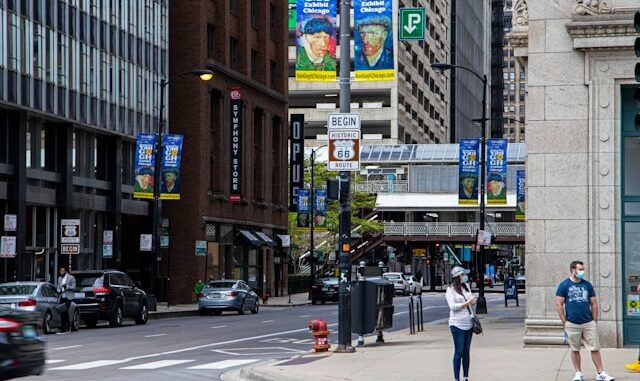
Car accidents involving pedestrians can be devastating, often resulting in serious injuries and complex legal proceedings. In Ontario, Canada, pedestrians involved in such accidents face challenges in proving their case, especially when it comes to determining fault and seeking compensation. One crucial factor that can significantly strengthen a pedestrian’s claim is the presence of witnesses. Additionally, understanding the concept of “Reverse Onus” in these situations is essential. Here’s a comprehensive look at why witnesses matter and how “Reverse Onus” applies in pedestrian car accidents in Ontario.
The Role of Witnesses in Pedestrian Car Accidents
Witnesses play a pivotal role in providing unbiased accounts of how an accident occurred. Their testimonies can corroborate the pedestrian’s version of events and help establish liability. Here are key reasons why witnesses are critical:
- Corroboration of Events: Witnesses provide an independent perspective on the accident. Their statements can confirm details such as the actions of the driver, the pedestrian’s behavior, and the circumstances leading up to the collision. This corroboration strengthens the reliability of your claim.
- Establishing Fault: In Ontario, determining fault in car accidents is crucial for determining liability and compensation. Witnesses can offer insights into who was at fault based on their observations of the accident. Their testimony can support your case in proving negligence or recklessness on the part of the driver.
- Supporting Evidence: Witness statements serve as tangible evidence in legal proceedings. They can be used to counter any disputes or conflicting accounts raised by the opposing party or insurance companies. This strengthens the credibility of your claim and increases the likelihood of a favorable outcome.
The Concept of “Reverse Onus” in Ontario
In pedestrian car accidents in Ontario, the legal principle of “Reverse Onus” may come into play. This principle shifts the burden of proof onto the defendant (usually the driver) to prove that they were not at fault or that they exercised reasonable care to avoid the accident. Here’s how “Reverse Onus” impacts pedestrian car accident cases:
- Presumption of Fault: There is a presumption that drivers are at fault in accidents involving pedestrians unless they can prove otherwise. This places a higher burden on drivers to demonstrate that they were not negligent or that the pedestrian’s actions contributed significantly to the accident.
- Enhanced Legal Protection: “Reverse Onus” provides added legal protection for pedestrians by acknowledging their vulnerability in accidents involving motor vehicles. It ensures that drivers take responsibility for exercising caution and adhering to traffic laws to prevent harm to pedestrians.
Steps to Take After a Pedestrian Car Accident
If you are involved in a pedestrian car accident in Ontario, follow these steps to maximize the effectiveness of witness testimonies and understand the implications of “Reverse Onus”:
- Seek Medical Attention: Your health is paramount. Seek medical treatment immediately, even if your injuries seem minor. Documenting your injuries is crucial for your claim.
- Collect Witness Information: If possible, gather contact details from witnesses at the scene. Ask them to provide statements to support your version of events. Witnesses can include pedestrians, other drivers, or bystanders who witnessed the accident.
- File a Police Report: Contact law enforcement to report the accident. A police report provides an official record of the incident and can include witness statements, which are valuable for your claim.
- Consult with a Personal Injury Lawyer: Legal guidance is essential to navigate the complexities of pedestrian car accident claims. A personal injury lawyer specializing in motor vehicle accidents can advise you on your rights, gather evidence, and represent your interests in negotiations or court proceedings.
Legal Considerations and Benefits
Understanding the legal framework and benefits available under Ontario’s insurance system is crucial:
- Accident Benefits: In Ontario, pedestrians injured in car accidents may be entitled to accident benefits regardless of fault. These benefits cover medical expenses, rehabilitation costs, income replacement, and other necessary expenses related to your recovery.
- Suing for Damages: If you suffer severe injuries, you may also have the option to sue the at-fault party for additional damages beyond accident benefits. Witness testimonies can strengthen your case in pursuing compensation for pain and suffering, future medical expenses, and loss of income.
Conclusion
Pedestrian car accidents in Ontario require careful navigation of legal procedures and evidence gathering to establish liability and secure compensation. Witnesses play a crucial role in providing unbiased accounts of the accident, which can significantly strengthen your claim. Understanding the concept of “Reverse Onus” underscores the legal protections available to pedestrians and shifts the burden onto drivers to prove their innocence in accidents. By following proper procedures, gathering witness statements, and seeking legal advice, pedestrians can effectively pursue their rights and receive the compensation they deserve under Ontario law.
